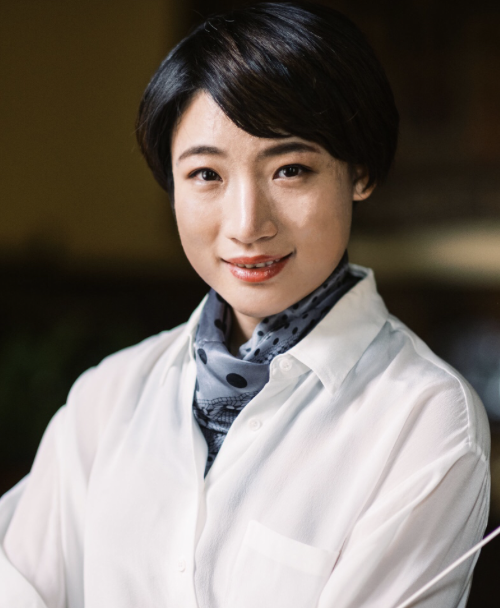|
Symphony
VSO'S CONCERT MUSIC OF TIME, MUSIC OF PLACE
by Peter Lert
Sunday, April 27, 2025
Choral and Vocal
CANTIAMO SONOMA SINGS AN INSPIRED GOOD FRIDAY MOZART REQUIEM CONCERT
by Pamela Hicks Gailey
Friday, April 18, 2025
Symphony
DRAMATIC SHOSTAKOVICH SYMPHONY CLOSES PHILHARMONIC'S 25TH SEASON
by Terry McNeill
Sunday, April 13, 2025
Recital
LARGE COLLEGE OF MARIN AUDIENCE GREETS STOPHER ARTISTRY
by Terry McNeill
Saturday, April 5, 2025
Chamber
FRISSON DELIVERS SHIVERS OF DELIGHT
by Abby Wasserman
Sunday, March 30, 2025
Symphony
OLD AND MOSTLY NEW IN SRS MARCH CONCERT IN WEILL
by Peter Lert
Saturday, March 22, 2025
Symphony
TWO FORMIDABLE SYMPHONIES AND PURPLE MOUNTAINS AT SRS CONCERT
by Peter Lert
Sunday, February 23, 2025
Chamber
THE PARKER CAPTURES DEMANDING ADES QUARTET AT RAC SEBASTOPOL CONCERT
by Peter Lert
Saturday, February 15, 2025
SPLENDID ECHOES ACROSS THE BAY
by Abby Wasserman
Sunday, February 9, 2025
ETHEREAL DUO IN WEILL HALL RECITAL
by Pamela Hicks Gailey
Thursday, February 6, 2025
|
 |
 Conductor Yue Bao |
OLD AND MOSTLY NEW IN SRS MARCH CONCERT IN WEILL
by Peter Lert
Saturday, March 22, 2025
Santa Rosa Symphony's March 22 concert might be thought of as encompassing both the old world (Mendelssohn's E Minor Violin Concerto, one of the cornerstones of the German Romantic period) and the new, with both an echo of the European late romantic period: Dvorak's Symphony New World Symphony (No. 9), and the new - Gabriela Lena Frank's “Elegia Andina.” For this performance of Ms. Frank’s work from 2000, the Santa Rosa Symphony was led by guest conductor Yue Bao.
The Elegia begins with swelling strings and tympani, with a theme then introduced by a solo flute and underlaid by woodblocks. It's passed to clarinets and bassoons, later transitioning into “Rite of Spring” like repeated string downbows. A solo by two trumpets is intentionally discordant, playing a minor second apart. The “dual solo” writing continues with a cadenza for two flutes; according to the composer, this emulates the Peruvian double row panpipe, with each row having a different tuning. Another orchestral crescendo, with rolling tympani, resolves to a peaceful ending.
Violinist Simone Porter joined the orchestra for the Op. 64 Mendelssohn. first performed in 1845 with a violin owned by Heifetz and now in San Francisco with Alexander Barantschick. Throughout it departs from standard concerto practice of the era in several ways: rather than a lengthy orchestral introduction, the solo part begins after only a bar and a half, the cadenza (written by the composer rather than improvised by the soloist) occurs before, rather than after the recapitulation of the theme, and, in an effort to thwart the interruption of the splendid piece by applause after each movements all three are played attaca, with no pause between them.
Ms. Porter's performance was not only technically flawless (I was particularly impressed by the accuracy and purity of her octaves and double stops) but expressive and highly spirited. The soloist moved, and moved about, with the music. The slow second movement was deeply heartfelt playing, while the final allegro molto vivace, after the brief Allegretto non troppo transition from the end of the second movement, had ample sparkle and excitement. The standing ovation that greeted Ms. Porter at the conclusion would have resulted even if the audience had been allowed to applaud after each movement.
Throughout this concert I was impressed by the level of expression and spirit Ms. Bao was able to generate from the Symphony, not only with a clear beat but with laudable restraint as well. European conductors of the Romantic and post-Romantic era tended to subscribe to the “if you can't express it with the stick and your eyes, maybe it doesn't need to be expressed” philosophy.
Dvorak's Op. 95 Symphony was commissioned by the New York Philharmonic and premiered in Carnegie Hall at the end of 1893 to an immediate enthusiastic reception.
The first movement, particularly at its beginning, might be the most European, perhaps even “the most Bohemian,” of the work, but under Ms. Bao's direction it soon took on a driving rhythm. The second, with the famous English horn solo beautifully performed by Jesse Barrett, is now known to many as the Negro Spiritual “Goin' Home,” but there's a catch: while it's thought that Dvorak based it on a Spiritual (and he'd undoubtedly heard some), it's in fact his own entirely original composition, and the “Goin' Home” lyric identification wasn't added until 1932.
The third movement is in traditional scherzo form. Its driving A minor motif elicits perhaps Native American warriors padding through the forest, while its E major trio sections could suggest American farming folk songs, and Ms. Bao and the Orchestra brought out the contrasts clearly. Like all the movements of “From the New World,” it's recursive: each movement quotes those that have gone before. The recursions continued through the finale, ending with a final restatement of the first movement's opening motif, but with a last, possibly whimsical, Dvorak twist: the final chord isn't a triumphal fortissimo blast, but, while it starts loudly enough, the piece ends with a prolonged fade to pianissimo in the horns and bassoons.
Once again, the audience showed its appreciation with a standing ovation.
|

